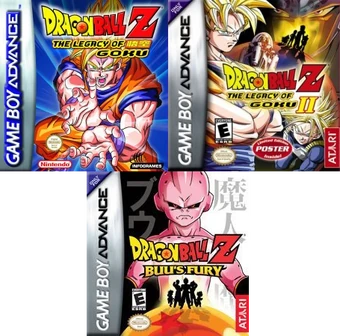Dragon Ball Z The Legacy Of Goku Ii For Gba
- Dragon Ball Legacy Of Goku 2
- Dbz Legacy Of Goku Download
- Dragon Ball Z The Legacy Of Goku Ii For Gba Free
Download 2288 – 2 in 1 – Dragon Ball Z – The Legacy of Goku I & II (U) GBA ROM
Dragon Ball Legacy Of Goku 2

Find all our Dragon Ball Z: The Legacy of Goku II Cheats for Gameboy Advance. Plus great forums, game help and a special question and answer system. Find helpful customer reviews and review ratings for Dragon Ball Z: The Legacy of Goku II at Amazon.com. Read honest and unbiased product reviews from our users. True to the DBZ series, created by Akira Toriyama, the Legacy of Goku II follows events from the Trunks Saga until the completion of the Cell Games. After the death of Gohan, assassinated by Androids 17 & 18, Trunks has no other choice but to go back in time, 16 years ago, to change the course of history.
The Game Boy Advance[a] (GBA) is a 32-bit handheld video game console developed, manufactured and marketed by Nintendo as the successor to the Game Boy Color. It was released in Japan on March 21, 2001, in North America on June 11, 2001, in Australia and Europe on June 22, 2001, and in mainland China on June 8, 2004 as iQue Game Boy Advance. The GBA was part of the sixth generation. The original model was not backlit and Nintendo addressed that with the release of the redesigned Game Boy Advance SP in 2003. Another redesign, the Game Boy Micro, was released in 2005.
As of June 30, 2010, the Game Boy Advance series has sold 81.51 million units worldwide. Its successor, the Nintendo DS, was released in November 2004 and is also compatible with Game Boy Advance software.
Contrary to the previous Game Boy models, which were all following the “portrait” form factor of the original Game Boy (designed by Gunpei Yokoi), the Game Boy Advance was designed in a “landscape” form factor, putting the buttons to the sides of the device instead of below the screen. The Game Boy Advance was designed by the French designer Gwénaël Nicolas and his Tokyo-based design studio Curiosity Inc.
Dbz Legacy Of Goku Download
(TrashMan)-4.jpg)
Word of a successor to the Game Boy Color (GBC) first emerged at the Nintendo Space World trade show in late August, 1999, where it was reported that two new handheld systems were in the works: an improved version of the GBC with wireless online connectivity, codenamed the Advanced Game Boy (AGB), and a brand-new 32-bit system, which wasn’t set for release until the following year. On September 1st, 1999, Nintendo officially announced the Game Boy Advance, revealing details about the system’s specifications including online connectivity through a cellular device and an improved model of the Game Boy Camera. Nintendo teased that the handheld would first be released in Japan in August of 2000, with the North American and European launch dates slated for the end of the same year. Simultaneously, Nintendo announced a partnership with Konami to form Mobile 21, a development studio that would focus on creating technology for the GBA to interact with the Dolphin, Nintendo’s home console which was also in development at the time. On August 21, 2000, IGN showed off images of a GBA development kit running a demonstrational port of Yoshi Story, and on August 22nd, pre-production images of the GBA were revealed in an issue of Famitsu magazine in Japan. On August 24th, Nintendo officially revealed the console to the public in a presentation, revealing the Japanese and North American launch dates, in addition to revealing that 10 games would be available as launch titles for the system.

Dragon Ball Z The Legacy Of Goku Ii For Gba Free
The GBA was then featured at Nintendo Space World 2000 from August 24-26 alongside several peripherals for the system, including the GBA Link cable, the GameCube – Game Boy Advance link cable, a rechargable battery pack for the system, and an infrared communications adaptor which would allow systems to exchange data with each other. In March of 2001, Nintendo revealed details about the system’s North American launch, including the suggested price of $99.99 and the 15 launch games. Nintendo estimated that around 60 games would be made available for the system by the end of 2001